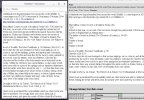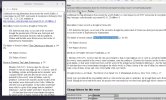Re: Historical Events Database
Shijing, question about Event ID 65:
In the Quote field you have citations Yeomans (1991) and Pankenier, Xu, & Jiang (2008), and you added "Full moon: July 17, August 15, September 14". However the main source is Gary W. Kronk. The Quote field is reserved for text from the main source only. Ideally the Quote field contains verbatim (as-is) text only. So all additional citations should go into the Notes field, including the full moon info, as I've written above. Also, what is the abbreviation "NB:"?
The requirements I've written about above are still open to discussion. We still can change things, no problem. But the main thing is that we enter data uniformly. We have to agree on a certain standard.
Shijing, question about Event ID 65:
In the Quote field you have citations Yeomans (1991) and Pankenier, Xu, & Jiang (2008), and you added "Full moon: July 17, August 15, September 14". However the main source is Gary W. Kronk. The Quote field is reserved for text from the main source only. Ideally the Quote field contains verbatim (as-is) text only. So all additional citations should go into the Notes field, including the full moon info, as I've written above. Also, what is the abbreviation "NB:"?
The requirements I've written about above are still open to discussion. We still can change things, no problem. But the main thing is that we enter data uniformly. We have to agree on a certain standard.



